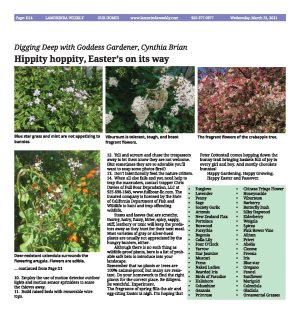|
|
Published March 31st, 2021
|
Digging Deep with Goddess Gardener, Cynthia Brian
|
| Hippity hoppity, Easter's on its way |
| By Cynthia Brian |
 |
| For a burst of bright color and wildlife resistance, the spring flowering freesia is fantastic. Photos Cynthia Brian |
By Cynthia Brian

 "It was Easter Sunday. The full-blossomed trees filled all the air with fragrance and with joy." ~ Henry Wadsworth Longfellow, Spanish Student
"It was Easter Sunday. The full-blossomed trees filled all the air with fragrance and with joy." ~ Henry Wadsworth Longfellow, Spanish Student

 Blossoming fruit trees, poppies adorning hillsides, and daffodils illuminating walking paths . the sirens of the start of spring have sprung. As seedlings pop through the soft soil and new green growth emerges on hedges, trees and vines, uninvited wildlife visitors tend to hop, fly, scamper, and trot into our landscapes.
Blossoming fruit trees, poppies adorning hillsides, and daffodils illuminating walking paths . the sirens of the start of spring have sprung. As seedlings pop through the soft soil and new green growth emerges on hedges, trees and vines, uninvited wildlife visitors tend to hop, fly, scamper, and trot into our landscapes.
 Here comes Peter Cottontail, hopping down the bunny trail, followed by the families of Bambi, Tom Turkey, and Squiggly Squirrel. A buffet feast awaits their arrival in our rose beds, perennial gardens, and vegetable patches.
Here comes Peter Cottontail, hopping down the bunny trail, followed by the families of Bambi, Tom Turkey, and Squiggly Squirrel. A buffet feast awaits their arrival in our rose beds, perennial gardens, and vegetable patches.
 What is a human to do to protect our precious landscapes from invaders?
What is a human to do to protect our precious landscapes from invaders?
 Although repellents promise perimeter patrolling, I have not found any that completely protect my premises. As much as I admire these furry, feathered and fluffy "friends," I don't want them munching my flowers, foliage, sprouts and shrubs. How can we find a way for the realms of nature to co-exist?
Although repellents promise perimeter patrolling, I have not found any that completely protect my premises. As much as I admire these furry, feathered and fluffy "friends," I don't want them munching my flowers, foliage, sprouts and shrubs. How can we find a way for the realms of nature to co-exist?
 Here are few suggestions:
Here are few suggestions:
 1. Fencing is the most effective deterrent for deer and rabbits. Although the bunnies can't jump over a 6-foot fence, to keep deer out of our gardens, we need to erect 9-foot enclosures. Sadly, squirrels scurry from trees to fence rails. Turkeys fly over fences.
1. Fencing is the most effective deterrent for deer and rabbits. Although the bunnies can't jump over a 6-foot fence, to keep deer out of our gardens, we need to erect 9-foot enclosures. Sadly, squirrels scurry from trees to fence rails. Turkeys fly over fences.
 2. Drive around your neighborhood to see what kinds of plants are thriving. Consider using what grows well in your area.
2. Drive around your neighborhood to see what kinds of plants are thriving. Consider using what grows well in your area.
 3. During dry months, some sprays may be effective, including Liquid Fence which, according to the company, is natural, biodegradable, non-toxic, and safe for the environment with rotten eggs being the main ingredient. Supposedly wildlife can smell the stink up to two weeks after humans can no longer smell the stench.
3. During dry months, some sprays may be effective, including Liquid Fence which, according to the company, is natural, biodegradable, non-toxic, and safe for the environment with rotten eggs being the main ingredient. Supposedly wildlife can smell the stink up to two weeks after humans can no longer smell the stench.
 4. Sprinkle blood meal on flowers and foliage. The problem I have experienced with this method, however, is that it attracts raccoons and skunks! Not a winning suggestion.
4. Sprinkle blood meal on flowers and foliage. The problem I have experienced with this method, however, is that it attracts raccoons and skunks! Not a winning suggestion.
 5. Unless you have fencing and/or containment, avoid using plants that are known to be delicacies such as roses, fruit, and leafy greens. If you plant tasty treats, the hungry nomads will find them.
5. Unless you have fencing and/or containment, avoid using plants that are known to be delicacies such as roses, fruit, and leafy greens. If you plant tasty treats, the hungry nomads will find them.
 6. Before buying large quantities of a plant, test the nibbling desire by buying a small container and placing it for two weeks in an area where the wildlife wander. Watch and wait.
6. Before buying large quantities of a plant, test the nibbling desire by buying a small container and placing it for two weeks in an area where the wildlife wander. Watch and wait.
 7. Buy more mature plants in larger containers. Plants that have abundant leaves can tolerate the nipping and gnawing better than smaller specimens. Taller plants are less susceptible to damage when lower leaves are eaten. They recover more swiftly.
7. Buy more mature plants in larger containers. Plants that have abundant leaves can tolerate the nipping and gnawing better than smaller specimens. Taller plants are less susceptible to damage when lower leaves are eaten. They recover more swiftly.
 8. Don't over water. The lusher the specimen, the more attractive it is for dinner. Drought-resistant vegetation is less likely to be gobbled.
8. Don't over water. The lusher the specimen, the more attractive it is for dinner. Drought-resistant vegetation is less likely to be gobbled.
 9. Place pungent plants bordering areas that may be enticing. Mints, lantana, alyssum, marigolds, geraniums, catnip, strawflower, salvia, and scented geraniums may deter the diners.
9. Place pungent plants bordering areas that may be enticing. Mints, lantana, alyssum, marigolds, geraniums, catnip, strawflower, salvia, and scented geraniums may deter the diners.
 10. Employ the use of motion detector outdoor lights and motion sensor sprinklers to scare the thieves away.
10. Employ the use of motion detector outdoor lights and motion sensor sprinklers to scare the thieves away.
 11. Build raised beds with removable wire tops.
11. Build raised beds with removable wire tops.
 12. Yell and scream and chase the trespassers away to let them know they are not welcome. (But sometimes they are so adorable you'll want to snap some photos first!)
12. Yell and scream and chase the trespassers away to let them know they are not welcome. (But sometimes they are so adorable you'll want to snap some photos first!)
 13. Don't intentionally feed the nature critters.
13. Don't intentionally feed the nature critters.
 14. When all else fails and you need help to trap the marauders, contact trapper Chris Davies of Full Boar Depradation, LLC at 925-698-1845,
www.fullboar-llc.com. The insured company is licensed by the State of California Department of Fish and Wildlife to hunt and trap offending wildlife.
14. When all else fails and you need help to trap the marauders, contact trapper Chris Davies of Full Boar Depradation, LLC at 925-698-1845,
www.fullboar-llc.com. The insured company is licensed by the State of California Department of Fish and Wildlife to hunt and trap offending wildlife.
 Stems and leaves that are scratchy, thorny, hairy, fuzzy, bitter, spicy, sappy, stiff, leathery or toxic will keep the predators away as they hunt for their next meal. Most varieties of gray or silver-hued plants are usually not appreciated by the hungry hunters, either.
Stems and leaves that are scratchy, thorny, hairy, fuzzy, bitter, spicy, sappy, stiff, leathery or toxic will keep the predators away as they hunt for their next meal. Most varieties of gray or silver-hued plants are usually not appreciated by the hungry hunters, either.
 Although there is no such thing as wildlife-proof plants, here is a list of probable safe bets to introduce into your landscape.
Although there is no such thing as wildlife-proof plants, here is a list of probable safe bets to introduce into your landscape.
 Foxglove
Foxglove
 Lavender
Lavender
 Peony
Peony
 Sage
Sage
 Society Garlic
Society Garlic
 Artemis
Artemis
 New Zealand Flax
New Zealand Flax
 Portulaca
Portulaca
 Boxwood
Boxwood
 Forsythia
Forsythia
 Begonia
Begonia
 Calla Lily
Calla Lily
 Four O'Clock
Four O'Clock
 Yarrow
Yarrow
 Star Jasmine
Star Jasmine
 Muscari
Muscari
 Ferns
Ferns
 Naked Ladies
Naked Ladies
 Bearded Iris
Bearded Iris
 Birds of Paradise
Birds of Paradise
 Hellebore
Hellebore
 Columbine
Columbine
 Gazania
Gazania
 Primrose
Primrose
 Chinese Fringe Flower
Chinese Fringe Flower
 Honeysuckle
Honeysuckle
 Viburnum
Viburnum
 Barberry
Barberry
 Butterfly bush
Butterfly bush
 Silky Dogwood
Silky Dogwood
 Elderberry
Elderberry
 Weigela
Weigela
 Spirea
Spirea
 Pink Bower Vine
Pink Bower Vine
 Allium
Allium
 Privet
Privet
 Abelia
Abelia
 Cleome
Cleome
 Freesia
Freesia
 Iris
Iris
 Blue star
Blue star
 Oregano
Oregano
 Fennel
Fennel
 Sunflower
Sunflower
 Marigold
Marigold
 Calendula
Calendula
 Gladiola
Gladiola
 Ornamental Grasses
Ornamental Grasses
 Remember that no plants or trees are 100% animal-proof, but many are resistant. Do your homework to find the right plants for the correct place. Be diligent. Be watchful. Experiment.
Remember that no plants or trees are 100% animal-proof, but many are resistant. Do your homework to find the right plants for the correct place. Be diligent. Be watchful. Experiment.
 The fragrance of spring fills the air and egg-citing Easter is nigh. I'm hoping that Peter Cottontail comes hopping down the bunny trail bringing baskets full of joy to every girl and boy. And mostly chocolate bunnies!
The fragrance of spring fills the air and egg-citing Easter is nigh. I'm hoping that Peter Cottontail comes hopping down the bunny trail bringing baskets full of joy to every girl and boy. And mostly chocolate bunnies!
 Happy Gardening. Happy Growing.
Happy Gardening. Happy Growing.
 Happy Easter and Passover.
Happy Easter and Passover.

 Save the Date The Orinda Garden Club is holding a plant sale on April 17 from 9 a.m. to 2 p.m. at the Orinda Library Plaza with members propagated plants plus over 30+ varieties of tomato seeds, a Firewise demonstration table, and a garden marketplace. The event will be socially distanced and well-spaced outdoors throughout the Orinda Library Plaza. Look for your special seedlings at this local plant sale. Proceeds will benefit educational projects.
Save the Date The Orinda Garden Club is holding a plant sale on April 17 from 9 a.m. to 2 p.m. at the Orinda Library Plaza with members propagated plants plus over 30+ varieties of tomato seeds, a Firewise demonstration table, and a garden marketplace. The event will be socially distanced and well-spaced outdoors throughout the Orinda Library Plaza. Look for your special seedlings at this local plant sale. Proceeds will benefit educational projects. |
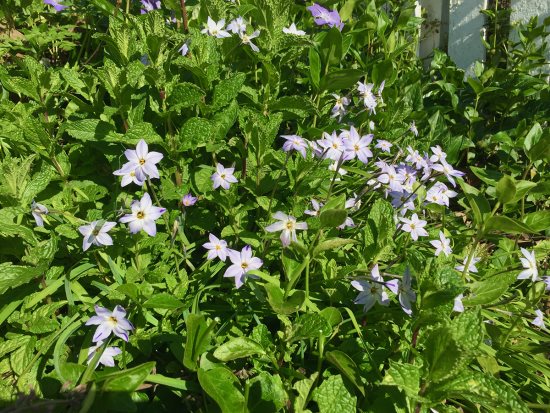 |
| Blue star grass and mint are not appetizing to bunnies. Photos Cynthia Brian |
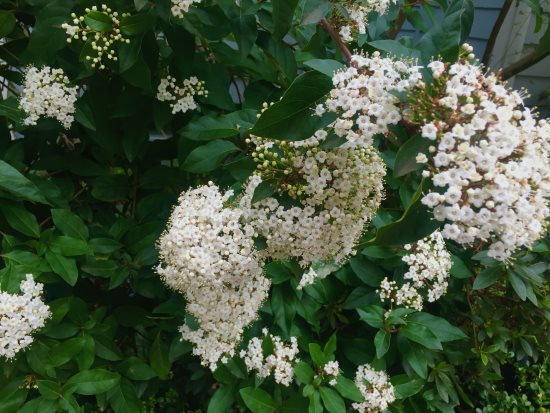 |
| Viburnum is tolerant, tough, and boast fragrant flowers. Photos Cynthia Brian |
 |
| The fragrant flowers of the crabapple tree. Photos Cynthia Brian |
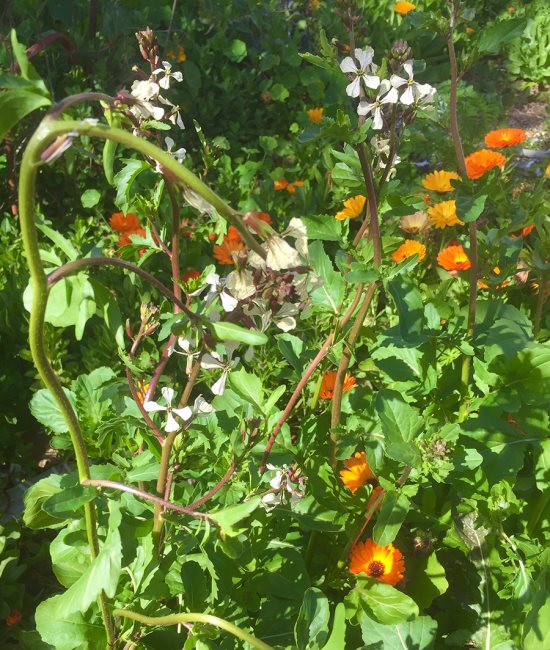 |
| Deer-resistant calendula surrounds the flowering arugula. Flowers are edible. Photos Cynthia Brian |
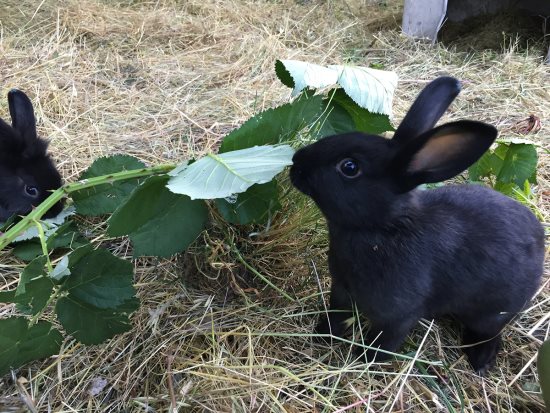 |
| Bunnies are adorable and for Easter;
we prefer the chocolate ones. |
 |
| Cynthia Brian sits in a garden of
Muscari,, cyclamen, and lavender freesia. |
| |
| Cynthia
Brian, The Goddess Gardener, is available for hire to help you prepare
for your spring garden. Raised in the vineyards of Napa County,
Cynthia is a New York Times best-selling author, actor, radio
personality, speaker, media and writing coach as well as the Founder
and Executive Director of Be the Star You Are!r 501 c3. Tune into
Cynthia's StarStyler Radio Broadcast at
www.StarStyleRadio.com.
Buy copies of her best-selling books, including, Chicken Soup for the
Gardener's Soul, Growing with the Goddess Gardener, and Be the Star
You Are! Millennials to Boomers at
www.cynthiabrian.com/online-store. Receive a FREE inspirational
music DVD. Hire Cynthia for writing projects, garden consults, and
inspirational lectures.
Cynthia@GoddessGardener.com
www.GoddessGardener.com |
|
|
|










